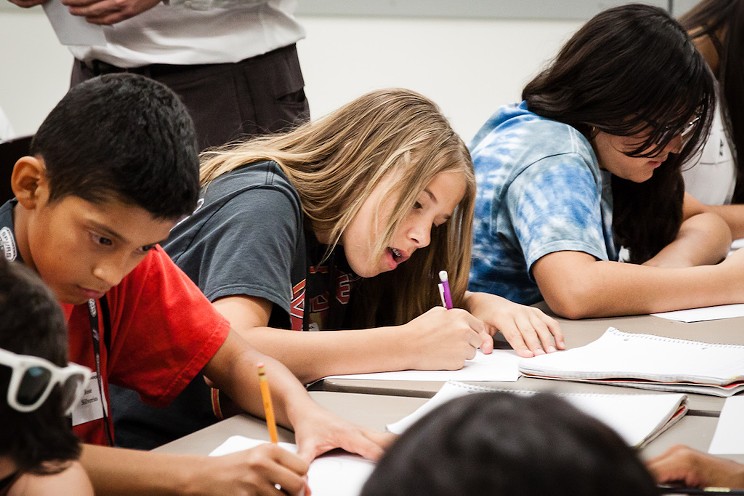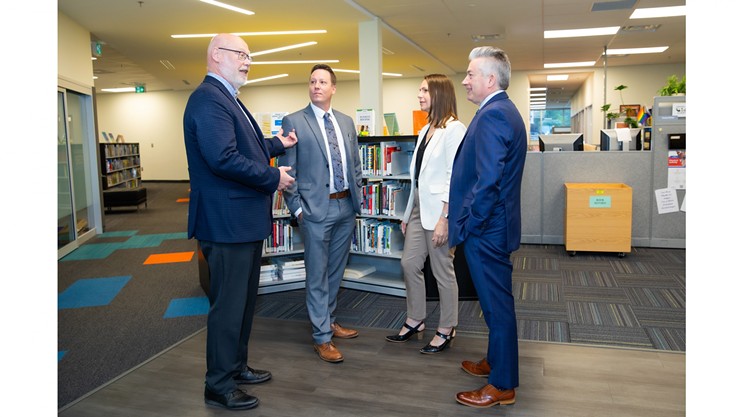At the beginning of August, Peter Day began his two-year term as the new president of the Nova Scotia Teachers’ Union, which represents over 10,000 active members. These are public school teachers from Pre-Primary through to Grade 12, and special education teachers.
Day tells The Coast that beginning his presidency feels “very similar to heading to a new school for the first time—it’s exciting, scary and all of the emotions in one.” Counting his time in school as a student and his 22 years as a teacher, Day says, “this is the first September in 41 years that I’m not going back to school—but I’m very much looking forward to this year.”
NSTU members will return to the classroom next week on Tuesday Sep. 3, just two days before students return to school on Thursday. “I can say with assurance that teachers and members of the NSTU are excited to have students come back and they want what's best,” says Day. “We all want an amazing school system, and by listening to the experts—the teachers and the specialists that work with the students every day—we can make some positive improvements.”
Over the summer, the NSTU’s last president, Ryan Lutes, represented members at a meeting of the province’s Public Accounts Committee to discuss the problem of violence in schools. This meeting was held two weeks after the release of a report from the provincial auditor general, Preventing and Addressing Violence in Nova Scotia Public Schools.
The report confirmed what teachers and school staff had been saying for years: that violent incidents are on the rise, that reporting and accountability following said incidents are weak, that the Provincial School Code of Conduct is outdated and that workplace violence strategies and oversight need improving. The auditor general laid out clear recommendations in her report, which the Department of Education agreed to in full, including a review of the current Code of Conduct, which the department said will be completed sometime this fall.
Day says he’s concerned about not knowing when that review will be completed; however, he hopes the province is “taking the time to do it right.” Says Day, “if the Code of Conduct can address the concerns of what appropriate behaviours are at school, then I think it will have a positive effect on violent incidents.” However, he says, “just to put it on paper doesn't mean much” unless there’s a way to ensure students know what’s expected of them and are encouraged to rise to that level.
“It breaks my heart when I hear stories from teachers, specialists, parents and students that they don't feel safe at school, or they've been harassed whether verbally or physically,” says Day. “These things are happening at the elementary level, the junior high level and high school level—and they’re serious issues that I sincerely hope the Code of Conduct will address.”
Day says violence in schools is more prevalent than what’s noted in the report, and that preventing and addressing these incidents is part and parcel with ensuring safe workplaces for teachers and educators. Schools have Occupational Health and Safety Committee representatives that, Day says, “are an important part of every single workplace, and we ensure that our NSTU members understand their rights in a workplace,” which includes the right to refuse unsafe work.
“Every single individual has the right to safe working conditions, and sometimes that gets brushed over [for teachers] because it's a school and our kids are the most important thing to our teachers—I can say that with honesty. But we need to ensure that our working environment is safe because we know that students’ learning conditions are teachers’ teaching conditions.”
Day says that means ensuring that Occupational Health and Safety Committees work properly at the individual school, regional and provincial levels.
Day says he’s held meetings with the minister of education, Becky Druhan, the deputy minister of education, Elwin LeRoux, and representatives from the Public School Administrators Association of Nova Scotia—the association representing principals and vice-principals in the province—to discuss what matters most to teachers and students. He says he’s hopeful they can work together to bring about positive changes.
“However, that's not going to stop me from advocating for the things we see as urgent.”
For example, says Day, take the new provincial cell phone policy that’s in place for the start of the school year.
The new policy requires students to turn off their phones while in school, with some exceptions. Day says while it would be great to reduce the distractions of phones at school, “we need to ensure that teachers can spend their time teaching and not repeatedly enforcing a cell phone policy.” He says it will be interesting to see how it plays out in the fall and that it will depend on each school’s administration and how seriously they enforce the new policy.
“I do think addressing cell phone usage will, in part, have an effect on some of the violent incidents in our schools if we do this properly, though.” That’s the problem, says Day, is that addressing and preventing school violence doesn’t have “one quick fix that we can enact overnight: this is a complex problem with many causes and cell phones are just one—but a useful Code of Conduct, which isn’t just a shelved piece of paper, is another.”
Yet another is school staffing shortages. The NSTU surveyed members this February and found that 84% of teachers have considered leaving the profession or moving to another province or country to teach.
Day says the ratification of the new four-year teachers’ provincial agreement this summer has made improvements to working conditions that he will make sure are followed through on, and he hopes will help with recruitment and retention of teachers, such as:
- Pay increases.
- Increases to the start-of-year organization and preparation time, which is now 240 minutes up from 120 minutes previously, and is entirely teacher-directed, says Day.
- Increased marking and preparation time throughout the year—now up from 12.5% to 15% of their scheduled instructional minutes, which Day says “is still not enough, but it's an improvement.”
- An assurance that class sizes will not increase during the agreement’s four-year term, ”which is not negative,” says Day, “but at the same time, we recognize that with the amount of needs in our classroom, we need to ensure that our class sizes are appropriately staffed.”
Looking ahead to Sep. 5, when students are back with their teachers in the classroom, Day says it’s too soon to know whether any schools will be short-handed. However, “I'm willing to bet that when school starts in September, there are going to be vacancies, and on top of that, there is going to be a deficiency of substitute teachers that are available, meaning, once again, we're going to rely on our retired teachers, and we're going to rely on our permit teachers—which are individuals with a bachelor’s degree but without an education degree.
“Are we going to feel that there are not enough teachers? Yes—I can say that without even seeing any numbers—we are going to feel that.”
Day says he’s “very much in favour of recruiting teachers to our amazing province—but the important part that we have to focus on is teacher retention.
“We have amazing teachers and specialists who are already here in our province, who are leaving our schools because of overwhelming class sizes, workloads and difficulties that, for example, our psychologists go through that are unacceptable.” Day says he’s had conversations with teachers who, like him, have been in the career for decades and are telling him, “I can't keep doing this.”
As he looks ahead to what he hopes to achieve at the helm of the NSTU, Day says, “I want to ensure that the voices of our teachers and our specialists are heard and actually listened to when we’re looking at issues in our public schools; they’re the experts who see what works and what doesn’t work in the classroom every day.”



